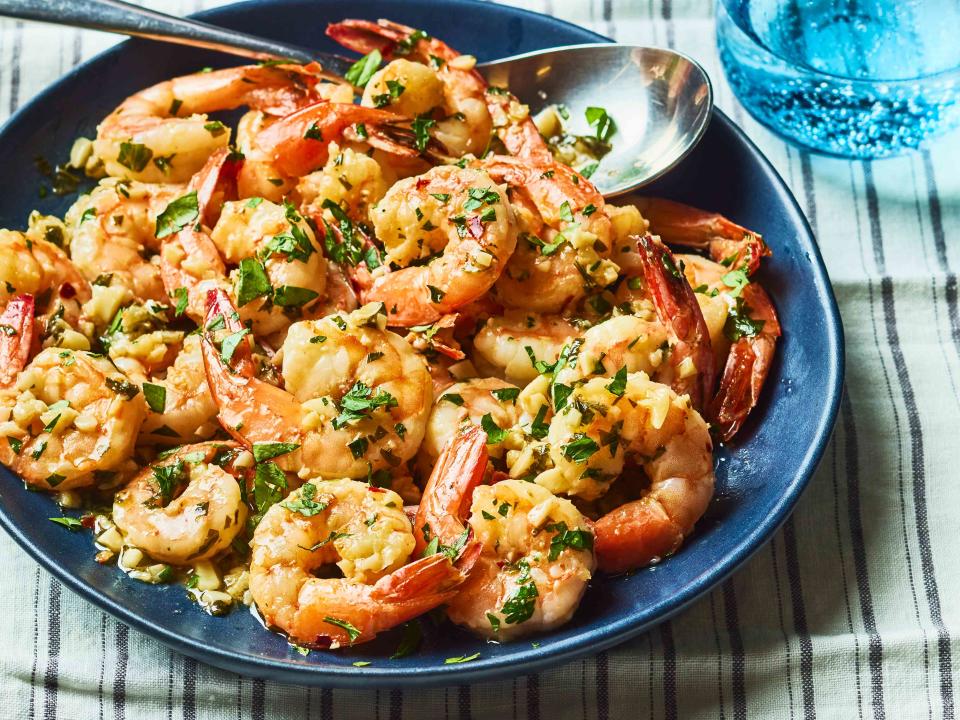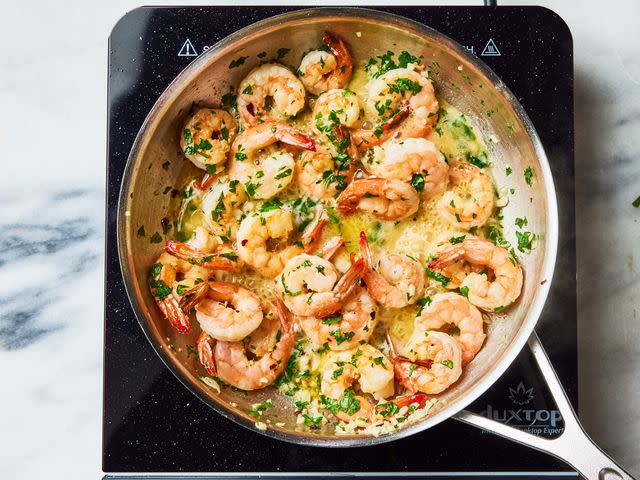The Ridiculously Simple Trick That Will Help You Cook Perfect Shrimp Every Time
It involves two letters of the alphabet.

Dotdash Meredith Food Studios
Shrimp is one of the easiest proteins to cook. Heat some olive oil in a skillet, sear off the shrimp, and finish with a knob of butter for a bite that's plump, juicy, and sweet all at once. They cook incredibly fast, plus they are readily available, often inexpensive, and healthy. Shrimp are not only so delicious, but they can turn any meal into something a bit more elegant.
Perhaps that’s why shrimp are one of the most popular of all seafood choices. You can keep a bag of frozen shrimp in the freezer, thaw them quickly, and enjoy a speedy weeknight dinner. If it sounds like we’re singing the praises of these delectable crustaceans, you’re right: We love them!
But because shrimp cook so fast, they can be quite tricky to get just right. It’s very easy to overcook them into a chewy, rubbery mess. There is no shame in overcooking shrimp (we’ve all been there!), but we're here with a simple, foolproof tip to ensure your shrimp are perfectly cooked and plump—and it all has to do with two letters: “C” and “O.”
How To Tell When Shrimp Is Done

Dotdash Meredith Food Studios
There is no shortage of cooking methods when it comes to shrimp, whether boiled, seared, grilled, poached, or “cooked” in a ceviche. The goal is all the same: to produce tender shrimp instead of something that tastes and feels more like a rubber band.
The proteins in shrimp constrict as they cook, causing them to bend a bit. When perfectly cooked, they should curl into a shape that resembles the letter “C.” On the other hand, if you continue cooking them, they’ll constrict into more of an “O” shape. At this point, the shrimp are overcooked.
It’s simple: “C” for “cooked”, “O” for “overcooked.” It’s just that easy!
Does This Tip Work for All Types of Shrimp?
Did you know there are some 2,000 varieties of identified shrimp in the world? Of that whopping number, we only really eat a small handful of varieties: pink, brown, rock, white, tiger, and royal reds. No matter the type of shrimp you choose to eat (or their size), they’ll all form a C when properly cooked.
The same goes for whether you start with fresh or previously frozen shrimp. Note that just about all shrimp sold in the U.S. are typically flash-frozen at extremely cold temperatures to preserve the quality. In fact, those individual peeled and deveined shrimp lounging on crushed ice in the seafood section of your grocery store were likely frozen and thawed at the market. That means there’s no great way to know how “fresh” those thawed shrimp actually are (unless you purchase seafood directly from a reliable fishmonger).
Whether shrimp were previously frozen or (perhaps) fresh, they will still form a C when finished cooking. It’s almost like shrimp come with a built-in thermometer.
How To Avoid Overcooking Shrimp
So now that you know what shrimp should look like when they are finished cooking, how do you actually cook shrimp? First, when we say shrimp cook fast, we mean it. They literally take a minute or two on each side if you are sautéing or grilling them, so don’t walk away! Look for them to just barely turn pink on one side before flipping. As soon as the shrimp start to curl into a C, remove them from the pan and let the residual heat continue cooking the shrimp.
If poaching, steaming, or boiling, look for similar cues. They will also turn pink and form a C when done. Boiling shrimp in a dark broth or sauce can be the trickiest to get right, as you’ll have to fish out a couple to visually check for doneness.
Read the original article on All Recipes.


